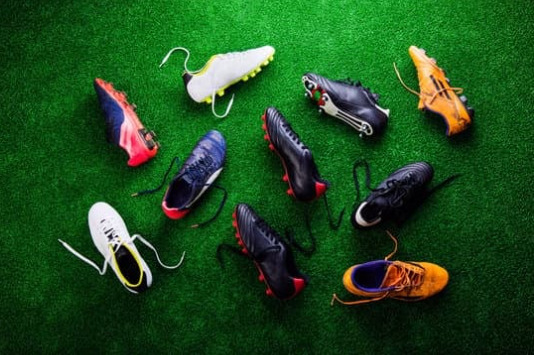Choosing the Right Cleats for Young Athletes
Football cleats are specialized footwear for football players. They help to support a player’s foot type whilst playing sports on various surfaces which tend to be either grass or turf.
The centering of the heel studs in football cleats which are directly under our heel bone can actually make a Sever’s disease pain worst. Sever’s Disease is a common cause of heel pain, particularly in young and physically active people. It is not actually a disease but rather an overuse injury or inflammation of the growth plate in the heel bone (calcaneus).
It’s important that we decide to use more studs at the heel to help distribute pressure more evenly rather than center it on just two cleats for example. We want to have a soleplate which is stable but not too hard.
When advising parents to choose which cleats for their children, we should consider for instance factors such as:
Fit and Comfort
Proper fit is essential. Ensure they are neither too loose nor too tight. They should provide a snug fit without causing discomfort or constriction. Emphasize comfort as uncomfortable ones can lead to blisters or foot injuries.
Age-Appropriate Size
Children’s feet grow quickly. It’s essential to choose cleats that accommodate growth while providing a secure fit. Avoid buying excessively large sizes as they can hinder performance and cause instability.
Which Type of Sport
Different sports require specific types of cleats. For instance, lacrosse and hockey will be different from football. Ensure the cleats chosen are suitable for the surface the sport is played on. E.g. firm ground, turf, or (artificial) indoor surfaces
What Type of Playing Surface
Understand the playing surface. For natural grass fields, traditional cleats with longer studs might be suitable. For artificial turf or hard surfaces, shorter studs or turf-specific ones might be more appropriate.
Type of Material and Durability
Look for quality materials that offer durability and support. Consider materials that are both durable and provide good support for the feet.
Ankle Support
Depending on the athlete’s needs and the sport played, some cleats offer ankle support. For sports where ankle stability is crucial (like football), consider cleats that provide ankle support without restricting movement excessively.
Regular Checks and Replacements
Children’s feet grow rapidly so regular checks are important.
By considering these factors, parents can make informed decisions when selecting cleats for their young athletes, promoting comfort, safety and optimal performance during sports activities.
Schedule an appointment here or you may call us at +44 (0) 207 101 4000.
We hope you have a feetastic day!
-The Chelsea Clinic and Team




